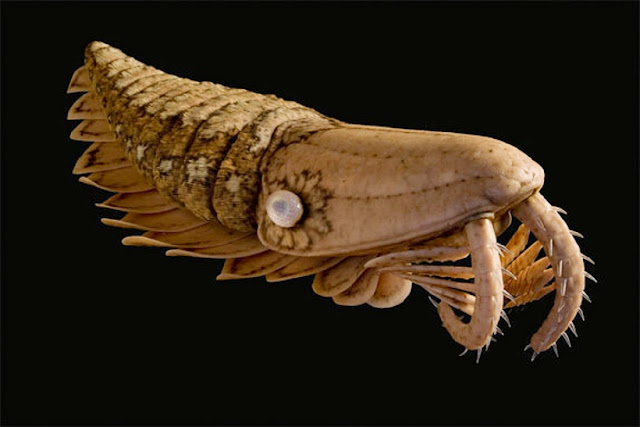Fishes and Deep Sea Creatures
Was it a raccoon? A dog with mange? Or was it a genetic experiment from Montauk Air Force? The internet went wild over this mysterious small animal, which washed ashore on a beach in New York. No one’s ever really been able to confirm what it is and to this day, no one knows what happened to the creature’s body.
The Paedocypris progenetica is officially the world's smallest fish at only 7.9mm long, that is less than 1/3 of an inch! Not only is in the smallest fish in the world, but it is also that smallest vertebrate or backboned animal in the entire world! It was discovered in the swamps on the Indonesian island of Sumatra in water that has a PH level of 3. This is about 100 times more acidic than regular rainwater!
The Paedocypris progenetica is actually partially see-through, they have a reduced head skeleton, which leaves the brain completely unprotected by bone. The previous record for smallest vertebrate was held by an 8mm species of Indo Pacific Goby. This discovery was made in 2006, I wonder if this really will hold up as the world's smallest fish.
 The Pacific barreleye fish is one the weirdest creatures lurking deep in the ocean. Named after its eyes that are literally shaped like barrels, the species' most unique trait is the completely transparent head.
The Pacific barreleye fish is one the weirdest creatures lurking deep in the ocean. Named after its eyes that are literally shaped like barrels, the species' most unique trait is the completely transparent head.
Pretty much everything about the venomous lionfish—its red-and-white zebra stripes, long, showy pectoral fins, and generally cantankerous demeanor—says, "Don't touch!" The venom of the lionfish, delivered via an array of up to 18 needle-like dorsal fins, is purely defensive. It relies on camouflage and lightning-fast reflexes to capture prey, mainly fish and shrimp. A sting from a lionfish is extremely painful to humans and can cause nausea and breathing difficulties, but is rarely fatal. Lionfish, also called turkey fish, dragon fish and scorpion fish, are native to the reefs and rocky crevices of the Indo-Pacific, although they've found their way to warm ocean habitats worldwide.
 |
Hawaii based photographer Joshua Lambus explores the mysterious creatures that live under the sea. In his latest project called Blackwater, he is able to capture stunning glowing shots of many of the marvelous species that inhabit the sea.

Koran Angelfish or Pomacanthus semicirculatus belong to the family Pomacanthidae. This species is endemic to the Indo-Pacific and the Rea Sea as far east as Samoa. Their geographical range stretches fromJapan down the entire east coast of Africa to Western Australia and New South Wales. These are marine reef fish, occupying depths from 3-100 feet.
 |
Anglerfishes are fish that are members of the teleost order Lophiiformes. They are bony fish named for their characteristic mode of predation, in which a fleshy growth from the fish's head (the esca or illicium) acts as a lure. Anglerfish are also notable for extreme sexual dimorphism seen in the suborder Ceratioidei, and sexual parasitism of male anglerfish. In these species, males may be several orders of magnitude smaller than females. Anglerfish occur worldwide. Some are pelagic, while others are benthic; some live in the deep sea (e.g., Ceratiidae) while others on thecontinental shelf (e.g., the frogfishes Antennariidae and the monkfish/goosefish Lophiidae). Pelagic forms are most laterally compressed, whereas the benthic forms are often extremely dorsoventrally compressed (depressed), often with large upward-pointing mouths.
 |
The 'smooch' fish, a recently discovered creature in the deepest part of the deepest part of the ocean (deep squared!) and can now be seen in a fantastic book called The Deep—The Extraordinary Creatures of the Abyss
The researchers investigated how the vision of deep-sea shrimps exhibiting both light-emitting organs and secretory luminescence differ from those with just secretory bioluminescence.
In the deep sea, the only forms of light are bioluminescence and dim sunlight from the surface, most commonly peaking in the blue spectrum. Therefore, most deep-sea species have one photopigment that is sensitive to blue-green light. They found deep-sea shrimps with both secretory and photophore bioluminescence have two photopigments making them sensitive to both blue-green and near-ultraviolent (near-UV) light.


























































1 comment: